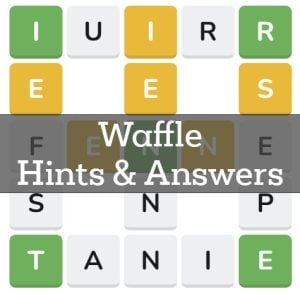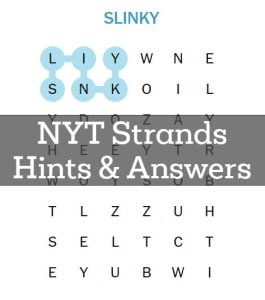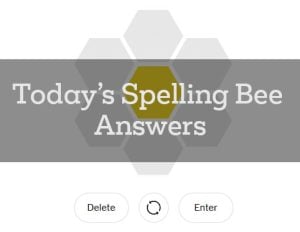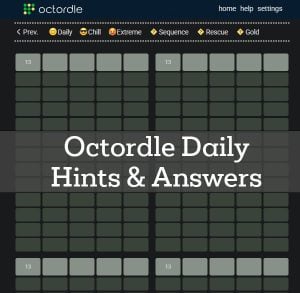Looking for the answers and hints for the Quordle puzzle from June 20, 2025? You’ve come to the right place! Every day, we archive the solutions to help you check your work or get that final clue you need. Below you will find all the answers for yesterday’s Quordle challenge.
Quordle Hints for June 20, 2025
Here are all the official hints to guide you toward the solution.
Word 1 Hints:- The word starts and ends with a consonant, and contains only one vowel, which appears in the middle.
- This is a noun describing a physical object and an action often associated with hair.
- It is related to hairstyling and can be considered a form of textile art.
- Often seen in various hairstyles for both practical and aesthetic reasons, especially common among those with long hair who wish to keep it tidy.
- Think of intertwining or weaving strands together to create a pattern that holds shape.
- The word has a double consonant in the middle, with a single vowel both preceding and following the repeated letters.
- This is an adverb, often used to describe an action that lacks liveliness or enthusiasm.
- It falls within the category of descriptive terms for actions, specifically relating to their energy or vigor.
- You might use this word when referring to the uninspired or lackluster way someone performs a task or reacts to something.
- Think of a word that rhymes with a common phrase meaning 'very soon' but conveys the opposite of a vibrant action.
- The word has five letters with a consonant-vowel-consonant-vowel-consonant pattern.
- It is a noun or an adverb, depending on context, and often describes speed or urgency in actions.
- This term is related to the concept of time and the swiftness of an action or response.
- You might use this word to describe someone's actions in a situation where they are rushing or need to be quick, perhaps to avoid delay or to meet a deadline.
- The word starts with a breathy consonant and ends with the sound one might make when they lift something heavy.
- This word consists of one consonant followed by a vowel, and this pattern is repeated throughout the word. There are no repeated letters.
- The word is an adjective often used to describe something that is vividly shocking or sensational in nature.
- It falls into the category of words that are used to evoke strong, sometimes negative, visual imagery or impressions.
- This term can be applied to descriptions in literature or journalism where the intent is to create a stark and garish mental image for the reader.
- Think of words that might be used to describe a vivid sunset - but in a jarring and potentially offensive way, emphasizing unpleasant vividness.
Spoiler Warning!
The final answers are below. Stop scrolling now if you want to solve it yourself!
Quordle Answer for June 20, 2025
Here is the final, official answer for the Quordle puzzle that was released on June 20, 2025.
BRAID, functioning as both a noun and a verb, refers to a complex pattern formed by intertwining three or more strands of flexible material such as hair, wire, or textile fibers. As a noun, it can describe the finished pattern (e.g. "She wore her hair in a braid."), while as a verb it describes the act of creating this pattern (e.g. "She will braid her sister's hair."). The word's roots trace back to Middle English, where it meant "to move suddenly" or "to zigzag," with the modern sense emerging around the 15th century. Players may have been thrown off by its starting consonant cluster "BR" and the uncommon use of "AI" as a vowel sound in the English language.
Word #2: DULLYDULLY is an adverb describing actions done without liveliness, sharpness, or luster (e.g. "The blade cut dully through the paper."). It's derived from the adjective "dull," which has Proto-Germanic origins, meaning "stupid" or "foolish." The term's evolution to a descriptor of reduced senses (like sight or hearing) adds to the challenge for players, as it has moved from a descriptor of intelligence to one of sensory experience. Its double consonant "LL" and less frequent "LY" ending may have also made it tricky for some to guess.
Word #3: HASTEHASTE is a noun that denotes swiftness of motion or speed in action, often implying urgency (e.g. "Make haste to arrive on time."). Its usage dates back to Middle English, borrowed from the Old French "haste," which might have been influenced by the Norwegian "hasta" meaning “to hurry." The word's connection to rapid actions or decisions could have posed a challenge due to the more common usage of its adjectival form "hasty." Moreover, the vowel-consonant combination "AST" might not be intuitive for players trying to solve the puzzle.
Word #4: LURIDLURID, typically an adjective, describes something that is glaringly vivid in color, especially in a way that creates an unpleasantly harsh or unnatural effect (e.g. "The sky glowed with a lurid shade of orange."). It can also mean sensational and shocking, often associated with graphic or explicit content (e.g. "The newspaper featured a lurid account of the crime."). "Lurid" comes from the Latin "luridus," meaning "pale yellow" or "ghastly." This word might have seen players struggling due to its unusual "UR" vowel pairing and the less commonly ending "ID." Additionally, its varied connotations might not immediately come to mind for those trying to decipher the puzzle.
Read More Daily Game Answers
Check out the answers and hints for our other popular daily word games and puzzles.






